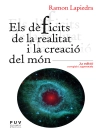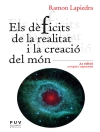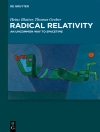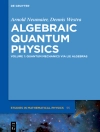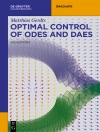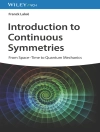This book explores the role of fractional calculus and associated partial differential equations in modeling multiscale phenomena and overlapping macroscopic & microscopic scales, offering an innovative and powerful tool for modeling complex systems. While integer order PDEs have a long-standing history, the novel setting of fractional PDEs opens up new possibilities for the simulation of multi-physics phenomena. The book examines a range of releavant examples that showcase the seamless transition from wave propagation to diffusion or from local to non-local dynamics in both continuum and discrete systems. These systems have been argued as being particularly relevant in contexts such as nonlinear optics, lattice nonlinear dynamical systems, and dispersive nonlinear wave phenomena, where the exploration of the potential fractionality has emerged as a highly active topic for current studies.
The volume consists of contributions from a diverse group of active scholars and expertsacross different fields, providing a detailed examination of the field’s past, present, and future state-of-the-art in the interplay of fractional PDEs and nonlinear wave phenomena. It is intended to be of wide interest to both seasoned researchers and beginners in the Field of Nonlinear Science. This book sets the stage for the next decade of research and beyond and is a timely and relevant reference of choice for this crucial junction of current research.
Содержание
Chapter 1. Fractional Dispersive Models and Applications (Panayotis G. Kevrekidis).- Chapter 2. Fractional Wave Models and Their Experimental Applications (Boris A. Malomed).- Chapter 3. Fractional Models in Biology and Medicine (Fractional Models in Biology and Medicine).- Chapter 4. Fractional Dissipative PDEs (Franz Achleitner).- Chapter 5. Symmetry breaking in fractional nonlinear Schrödinger and soliton dynamics in complex Ginzburg-Landau models (Pengfei Li).- Chapter 6. Traveling waves in fractional models (Traveling waves in fractional models).- Chapter 7. Numerical methods for fractional PDEs (Christian Klein).- Chapter 8. Fractional Non-Linear Quantum Analysis, Probability, Discretization, and Limits (Kay L. Kirkpatrick).- Chapter 9. Fractional Integrable Dispersive Equations (Mark J. Ablowitz).- Chapter 10. Fractional discrete linear and nonlinear models (Mario I. Molina).- Chapter 11. Breathers in the fractional Frenkel-Kontorova model (J. Catarecha).
Об авторе
Prof. Panayotis Kevrekidis earned his B.Sc. Degree from the University of Athens (1996) and a M.S. (1998), an M.Phil. (2000) and a Ph.D. (2000) in Physics from Rutgers University. He then spent a postdoctoral research year split between the PACM in Princeton and CNLS at Los Alamos National Laboratory. He joined the Department of Mathematics and Statistics of UMass, Amherst, as an Assistant Professor in September 2001. He became Associate Professor in 2005, Full Professor in 2010 and a Distinguished University Professor in 2015.
Kevrekidis’ interests are centered around the nonlinear dynamics of solitary waves in nonlinear partial differential equations and in lattice nonlinear differential-difference equations and the properties (existence, stability, dynamics) of such waves. A focal point of this work concerns the applications of such tools and techniques to systems from Physics (especially nonlinear optics and atomic physics), Materials Science, Biology and Chemistry. He has published over 700 research papers in a wide variety of venues in nonlinear physics and applied mathematics, given over 200 research lectures in conferences and universities around the globe, is an associate editor of 3 journals and has authored 8 books.
As quantitative measures of Kevrekidis’ impact to the research community, one can mention the h-index of 65 (in Web of Science, 82 in Google Scholar) and that his work has been cited over 28500 times (according to Google Scholar).
Prof. Jesús Cuevas-Maraver earned his B.Sc. Degree from the Faculty of Physics of the University of Seville in 1999 graduating third with a GPA of 7.87/10.0. He subsequently joined the Department of Applied Physics I of the same university where obtained his Ph.D. in Physics in 2003 under the supervision of Prof. Francisco R. Romero and Prof. Juan F.R. Archilla, with a Ph.D. thesis entitled “Localization and energy transfer in nonlinear inhomogenous systems”. After that, he joined the same department as an Assistant Professor and, from 2009, he is Associate Professor therein. His lectures in Elementary Physics (Mechanics, Thermodynamics and Electromagnetism) and Thermal Hydraulics take place at the Polytechnic School in several degrees of Industrial Engineering.
His research covers many aspects of Nonlinear Science and is based in the theoretical study of nonlinear localized waves as solitons, kinks or breathers that emerge in many physics systems. He has considered a wide range of such systems, which includes crystals, biomolecules, Bose–Einstein condensates, waveguide arrays, nonlinear circuits or transmission lines and metamaterials. He is a frequent referee in international journals, including Nature Physics, Physical Review Letters or Optics Letters. Prof. Jesús Cuevas-Maraver has written 134 scientific publications covering international journals and books. He has also edited 5 books.
As quantitative measures of Cuevas-Maraver’s impact to the research community, one can mention the h-index of 27 in Web of Science (35 in Google Scholar) and that his work has been cited over 2000 times, according to Web of Science (over 3000 in Google Scholar).



